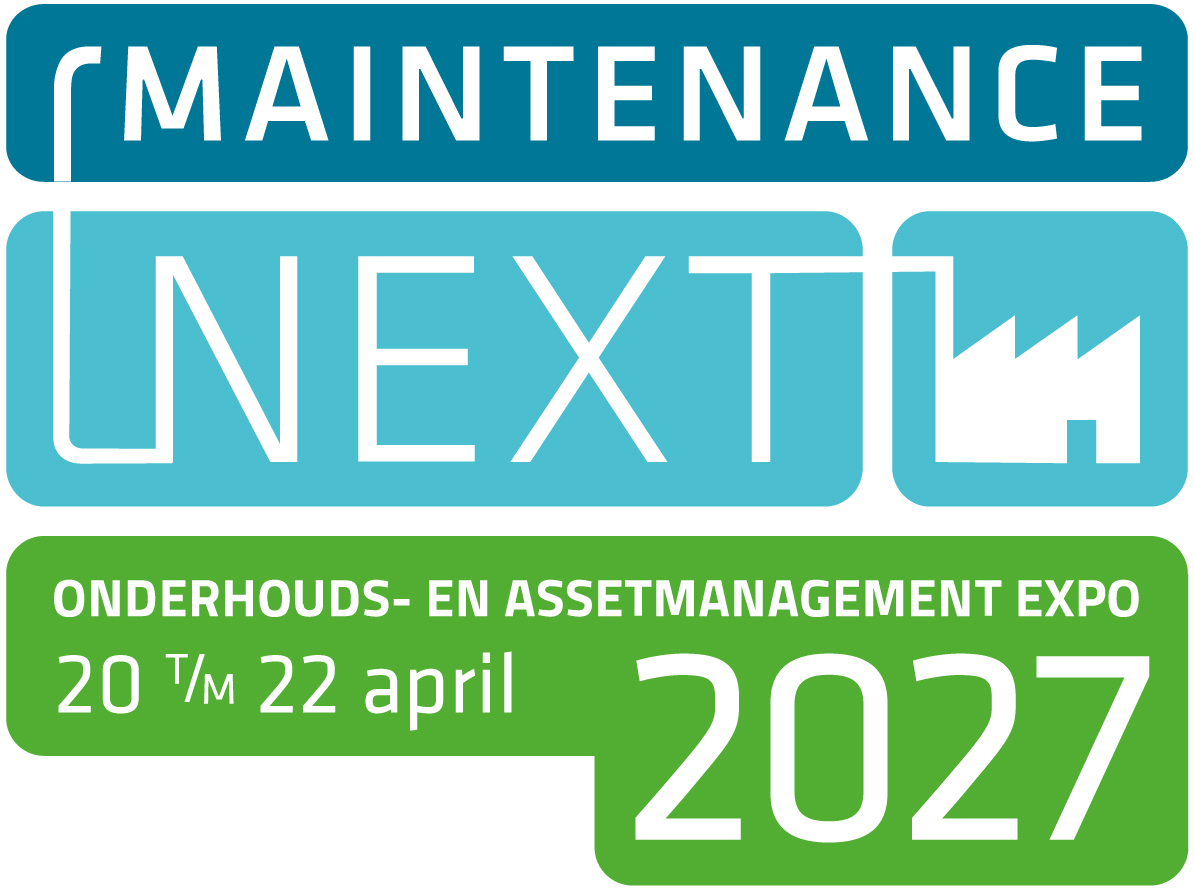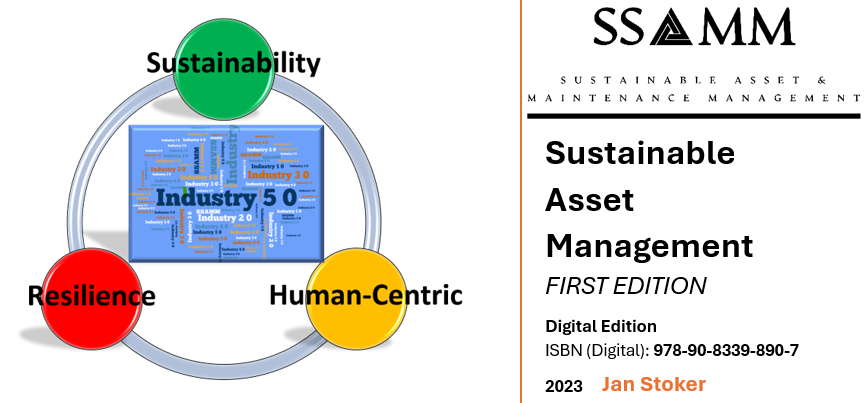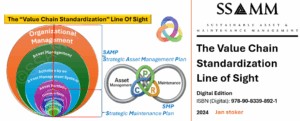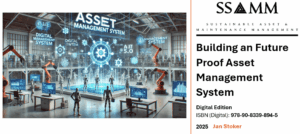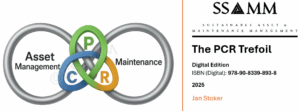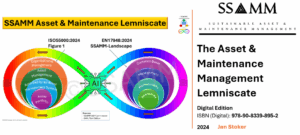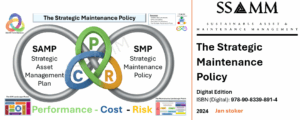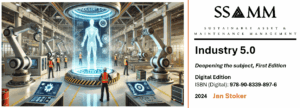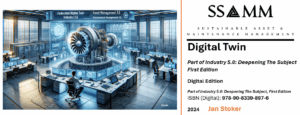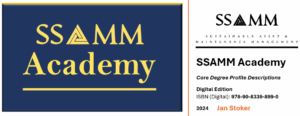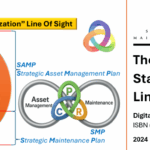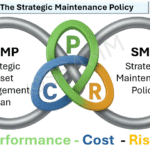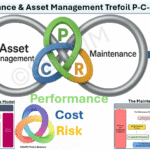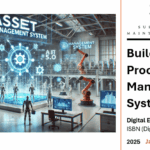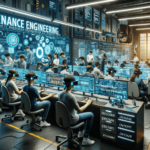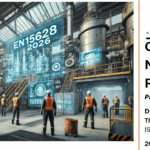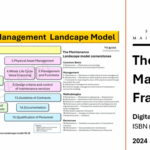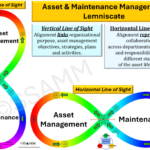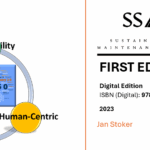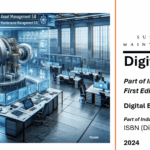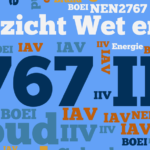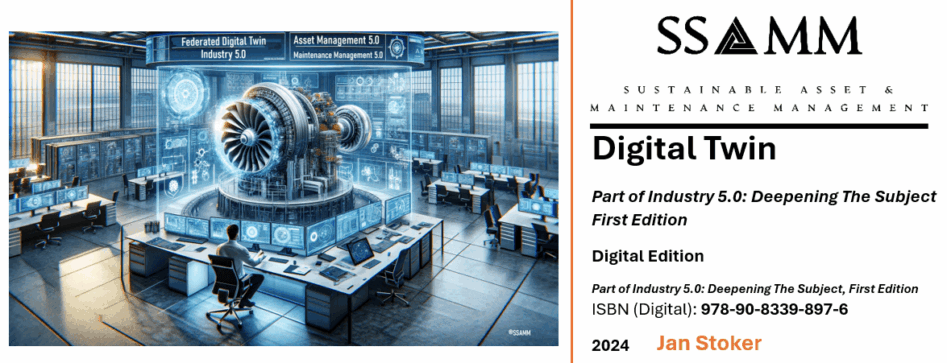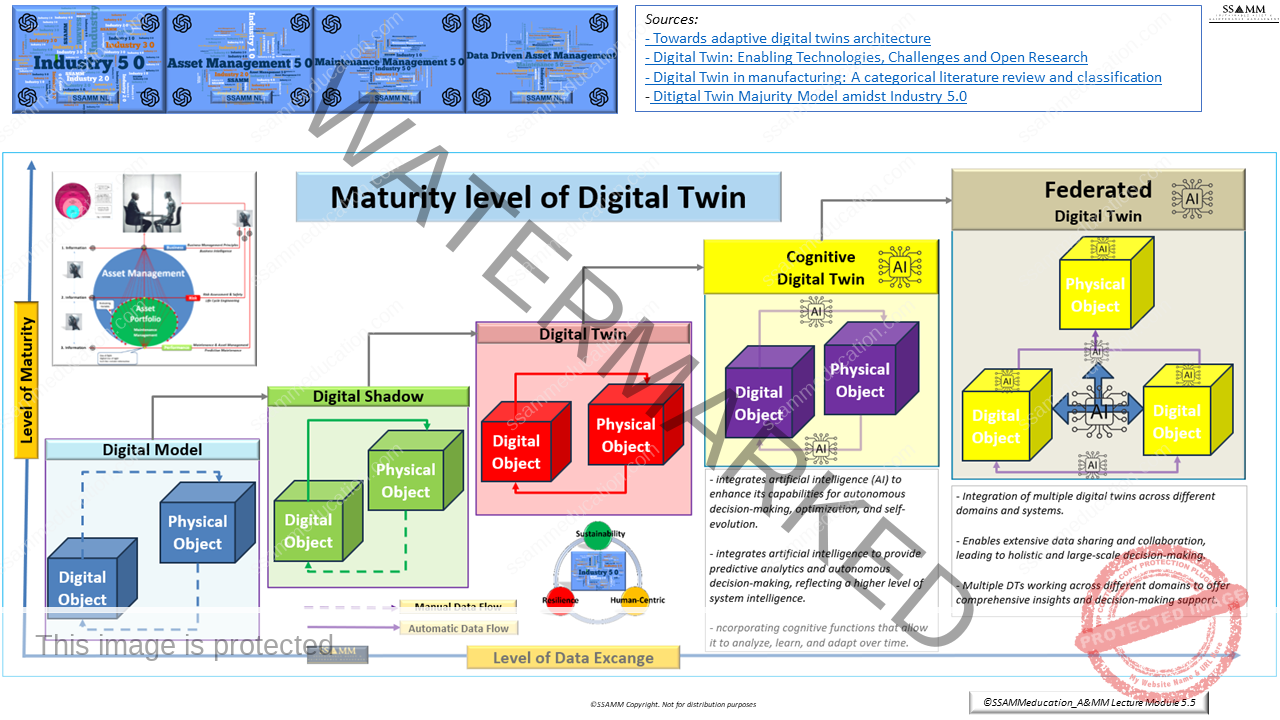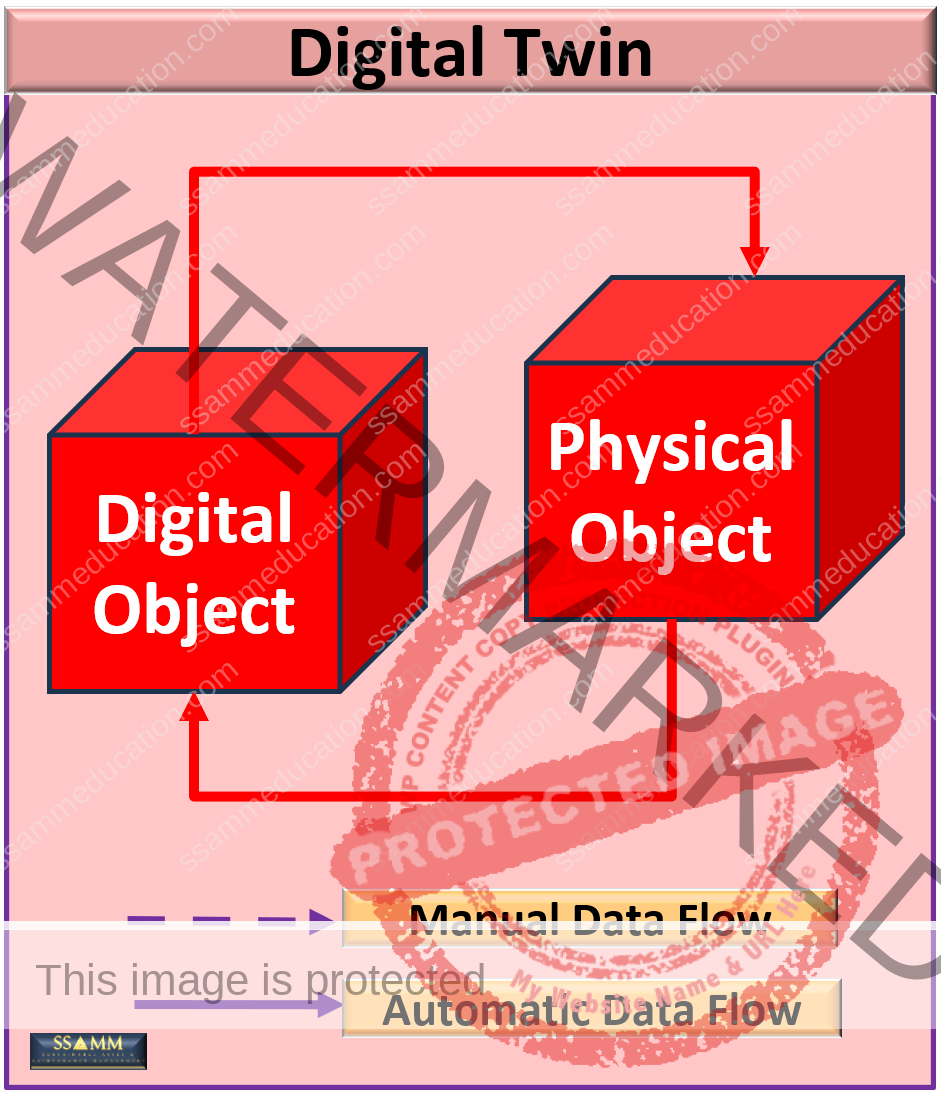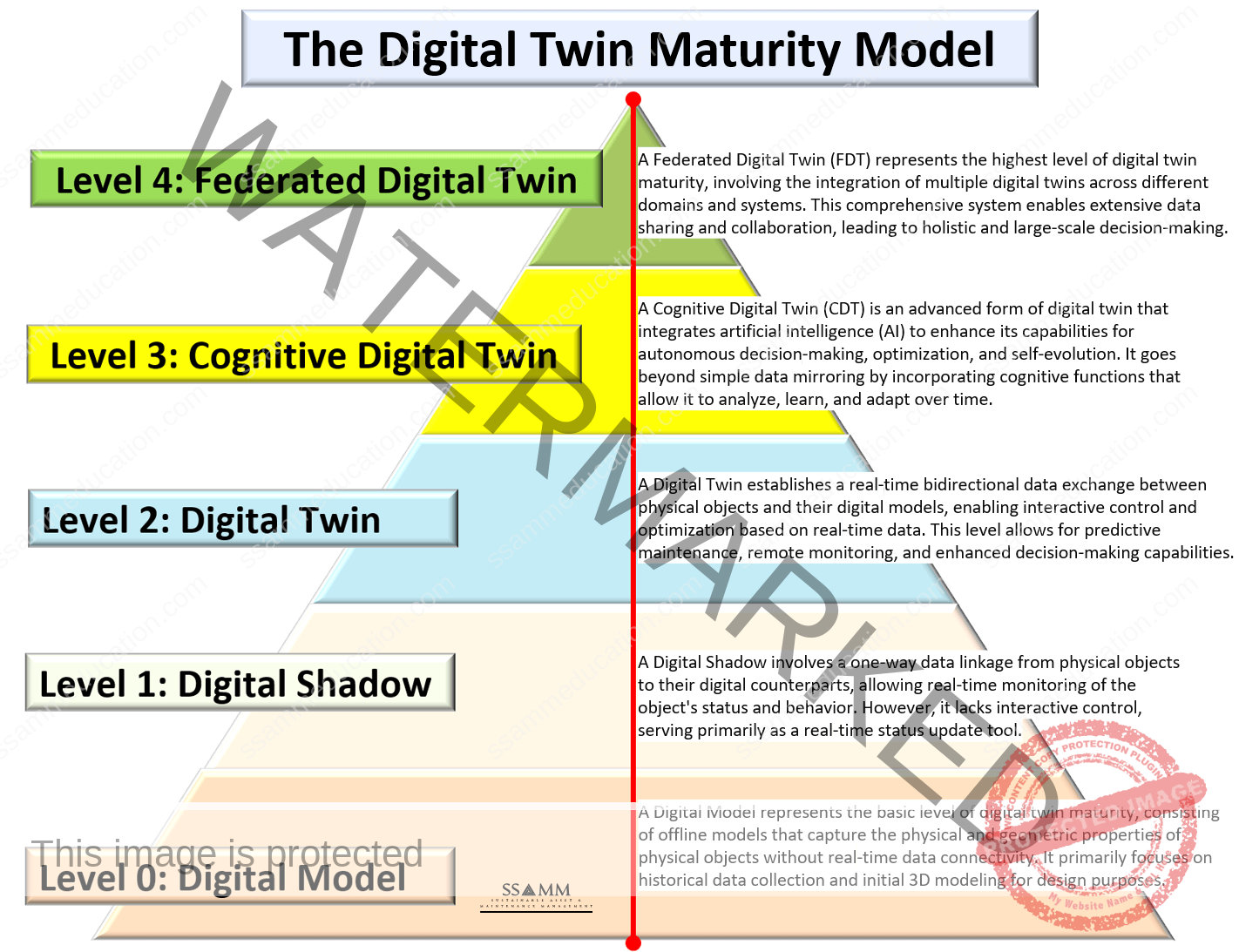Relation to the book “Industry 5.0: Deepening The Subject, First Edition”
This digital article (Digital Twin: Deepening The Subject) is part of the broader concepts and structure presented in the book Industry 5.0: Deepening The Subject, First Edition by Jan Stoker.
Primary reference
Title: Industry 5.0: Deepening The Subject, First Edition (Click Here)
Author: Jan Stoker
Publisher: SSAMM (Click Here)
ISBN/EAN:: 978-90-8339-897-6
The present article “Digital Twn: Deepening The Subject” should be regarded as an online extension and elaboration of the corresponding section in The maintenance Framework. The book remains the primary citable reference for the underlying framework and definitions.
© 2024 Jan Stoker / SSAMM. All rights reserved.
This web content is provided exclusively for registered SSAMM Academy clients under a personal, non-transferable licence. Unauthorised sharing of logins, screenshots, files or copies (in whole or in part) is not permitted.
In his ‘Learning Journey’ of defining Asset & Maintenance Management, lecturer/Researcher Jan Stoker of SSAMM write his finding and insights during this journey. Started in 2013 with his research, one of his goals is to understand Asset & Maintenance Management within the ISO55000 framework. Currently, his main goal is to describe and define Asset Management 5.0 based on this article. Check the related article’s on this page.
concept 2 june 2023
Updated 15 agust 2023 integration of metaverse
Published 24 september 2023 IR-5.0 integration
Underconstruction: integration ‘The Eco-System’
Add Chapter 5 April 2024 ‘The five Levels’.
- Industry 5.0: Deepening The Subject
- The Asset & Maintenance Management Pyramid
- The Digital Line of Sight: Deepening the subject
- Maintenance Management: Deepening the subject
- Digital Twin: Deepening the subject
- The Asset Management BowTie
- Conference Article
- Article IR5.0 Human-Centric
- The IR5.0 elephant in the room
- Decision-making with AI
- AM 5.0: Balancing Risk, Performance and Value
Initially, the foundation of digital representation was laid down through Digital Models. These models serve as digital blueprints, encapsulating the static attributes of physical assets. They enable a fundamental level of monitoring, assessment, and planning, thereby bringing about enhanced predictability, reduced operational downtimes, and better resource allocation. The ability to visualize assets digitally marks the first step towards a more informed, data-driven approach to maintenance management. Now, as we traverse into the realm of the metaverse, a new horizon emerges — the Digital Twin in Metaverse. This paradigm extends beyond static digital models to create dynamic, real-time virtual replicas of physical assets. These digital twins exist in the interconnected, immersive digital universe of the metaverse, enabling real-time monitoring, analytics, and remote control. The interactivity and collaborative potential within the metaverse enrich the utility of digital twins, making them not just reactive but proactive tools for asset and maintenance management.
The impact of Digital Twins on organizations is profound. The capability to mirror real-world assets in a digital realm allows for unparalleled levels of monitoring and analysis.
It heralds a significant reduction in operational and maintenance costs as issues can be identified and rectified swiftly, often before they escalate into major problems. Furthermore, the predictive maintenance capabilities enabled by digital twins ensure optimal asset performance and longevity.
Moreover, the digital twin technology facilitates the development of innovative maintenance strategies. By harnessing the collaborative essence of the metaverse, organizations can engage in real-time with global teams, vendors, and even customers to analyze, optimize, and innovate in the maintenance management domain. The shared digital space allows for collective problem-solving, fostering a culture of continuous improvement and innovation.
The integration of digital twin technology in the metaverse also paves the way for novel business models. By offering virtual walkthroughs, inspections, or even training modules, organizations can provide value-added services, thereby opening new revenue streams and enhancing customer engagement.
As Industry 5.0 beckons, the amalgamation of Digital Twin technology and the metaverse is not just a futuristic notion but an imperative for organizations aspiring to attain the pinnacle of operational excellence in asset and maintenance management. The journey from basic digital models to intricate digital twins within the metaverse embodies the potential for transformational change, ensuring organizations are robustly equipped to navigate the evolving industrial landscape.
Countdown SSAMM Academy Module 1
Explore the SSAMM Academy Asset Management and Maintenance Management courses.
Click Here for the Smart information page
Author: Ing. Jan Stoker MSc. MEng. Follow Jan Stoker
1. Introduction
The transition into Industry 5.0 marks an era where human intelligence converges with technological prowess to drive optimum efficiency and innovation across various industrial sectors. Central to this evolution is the advent of Digital Twin technology, especially in the realm of Asset and Maintenance Management. This piece delves into the transition from digital models to digital shadows, and finally to digital twins, culminating in the integration of digital twin technology within the metaverse, thus illustrating the transformative potential and myriad benefits it holds for asset and maintenance management.
1.1 The Evolution to Digital Twin Technology
-
Digital Model: Early stages of digital representation began with creating digital models – static digital blueprints encapsulating fundamental attributes and specifications of physical assets. These models were instrumental in providing a basic visual representation, aiding in elementary analysis and planning.
-
Digital Shadow: Advancements led to the emergence of digital shadows, which capture and reflect some real-time data from physical assets, providing a more dynamic but still limited digital representation. This step towards real-time data integration facilitated better monitoring and preliminary predictive analysis.
-
Digital Twin: Digital twin technology epitomizes the zenith of digital representation, embodying a real-time, interactive digital replica of physical assets or systems. Unlike digital shadows, digital twins provide comprehensive real-time data, behavior, and performance insights, enabling advanced analysis, predictive maintenance, and decision-making.
-
Digital Twin in Metaverse: The metaverse, an expansive virtual continuum, takes digital twin technology a notch higher. In the metaverse, digital twins can be accessed, manipulated, and optimized in an immersive and collaborative digital environment. This innovation extends the utility and interactive potential of digital twins, propelling asset and maintenance management into a new realm of possibilities.
1.2 Benefits of Digital Twin Technology
-
Enhanced Predictive Maintenance: By harnessing real-time data and performance analytics, digital twins facilitate predictive maintenance, significantly reducing unplanned downtimes and extending asset longevity.
-
Real-time Monitoring and Control: Digital twins enable real-time monitoring and control of assets from anywhere, providing a robust tool for ensuring optimal operational efficiency and rapid response to emerging issues.
-
Cost Reduction: By optimizing maintenance schedules, enhancing asset performance, and minimizing downtimes, digital twins contribute to substantial cost savings in maintenance operations.
-
Improved Decision-making: With a wealth of real-time data and analytics at their disposal, decision-makers can make more informed, timely decisions, enhancing operational efficacy and strategic planning.
-
Innovative Business Models: The integration of digital twins in the metaverse paves the way for novel business models, including virtual inspections, training, and collaborative problem-solving, opening new revenue streams and enhancing customer engagement.
As we transition into Industry 5.0, the transformative potential of digital twin technology in the field of asset and maintenance management is indisputable. By bridging the physical and digital worlds, digital twins in the metaverse promise a future where real-time, data-driven insights meld with human expertise to drive unparalleled operational excellence, innovation, and value creation.
Click to enlarge: classifications digital twins
2. Definitions
Digital Twin technology is an emerging concept that has become the centre of attention for industry and, in more recent years, academia. The advancements in industry 4.0 concepts have facilitated its growth, particularly in the manufacturing industry. The Digital Twin is defined extensively but is best described as the effortless integration of data between a physical and virtual machine in either direction.
- Nasa 2012: A Digital Twin is an integrated multiphysics, multiscale, probabilistic simulation of an as-built vehicle or system that uses the best available physical models, sensor updates, fleet history, etc., to mirror the life of its corresponding flying twin.
- Chen 2017: A digital twin is a computerized model of a physical device or system that represents all functional features and links with the working elements.
- Tao 2017:
- Liu et al. 2018: The digital twin is actually a living model of the physical asset or system, which continually adapts to operational changes based on the collected online data and information, and can forecast the future of the corresponding physical counterpart.”
- Zheng et al. 2018: A Digital Twin is a set of virtual information that fully describes a potential or actual physical production from the micro atomic level to the macro geometrical level.”
- Vrabic et al. 2018: A digital twin is a digital representation of a physical item or assembly using integrated simulations and service data. The digital representation holds information from multiple sources across the product life cycle. This information is continuously updated and is visualised in a variety of ways to predict current and future conditions, in both design and operational environments, to enhance decision making.
- Mandi 2019: A Digital Twin is a virtual instance of a physical system (twin) that is continually updated with the latter’s performance, maintenance, and health status data throughout the physical system’s life cycle.
2.1 Level of integration
Based on the given definitions of a Digital Twin in any context, one might identify a common understanding of Digital Twins, as digital counterparts of physical objects. Within these definitions, the terms Digital Model, Digital Shadow and Digital Twin are often used synonymously. However, the given definitions differ in the level of data integration between the physical and digital counterpart. Some digital representations are modelled manually and are not connected with any physical object in existence, while others are fully integrated with real-time data exchange. Therefore, there is a proposed classification of Digital Twins into four subcategories, according to their level of data integration. These subcategories are Digital Model, Digital Shadow, Digital Twind and The Metaverse Twin.
3. Model, Shadow, Twin and MetaTwin described
In the contemporary digital era, the quest for enhanced operational efficiency, accurate predictability, and real-time monitoring has given birth to an array of digital replication tools. Among these, digital models, digital shadows, and digital twins stand out as distinct yet interconnected concepts. These digital entities, though varying in their complexity and application, serve as the backbone of modern industry, facilitating a seamless interaction between the physical and digital worlds. This paper elucidates the intrinsic differences among digital models, digital shadows, and digital twins, tracing their evolution and impact on modern industrial operations.
3.1 The Digital model
A Digital Model is a digital representation of an existing or planned physical object that does not use any form of automated data exchange between the physical object and the digital object. The digital representation might include a more or less comprehensive description of the physical object. These models might include, but are not limited to simulation models of planned factories, mathematical models of new products, or any other models of a physical object, which do not use any form of automatic data integration. Digital data of existing physical systems might still be in use for the development of such models, but all data exchange is done in a manual way. A change in state of the physical object has no direct effect on the digital object and vice versa.
3.2 The Digital shadow
This data-centric entity facilitates a more accurate analysis of past performances and current operational statuses. However, the digital shadow still operates in a read-only mode, registering data from its physical counterpart but lacking a feedback loop to effect changes in real-time.
Based on the definition of a Digital Model, if there further exists an automated one-way data flow between the state of an existing physical object and a digital object, one might refer to such a combination as Digital Shadow. A change in state of the physical object leads to a change of state in the digital object, but not vice versa.
3.3 The Digital Twin
If further, the data flows between an existing physical object and a digital object are fully integrated in both directions, one might refer to it as Digital Twin. In such a combination, the digital object might also act as controlling instance of the physical object. There might also be other objects, physical or digital, which induce changes of state in the digital object. A change in state of the physical object directly leads to a change in state of the digital object and vice versa.
3.4 The MetaverseTwin
The Metaverse, a collective virtual shared space created by the convergence of virtually enhanced physical reality and physically persistent virtual reality, is more than just a buzzword in the tech industry. Its potential to transform various fields is immense, and Asset and Maintenance Management (AMM) is no exception. The blend of digital twins, augmented reality (AR), virtual reality (VR), and blockchain within the Metaverse creates a rich, interactive, and trust-ensured environment that can significantly uplift the way organizations manage and maintain their assets.
In the expansive realm of the metaverse, the Digital Twin technology finds a new dimension – introducing the concept of Digital Twin in Metaverse. Within this virtual continuum, digital twins of assets can be accessed, analyzed, and optimized in an immersive and collaborative digital environment. This not only enhances the scope and interaction with digital twins but also paves the way for innovative maintenance strategies and novel business models. The convergence of Digital Twins and the metaverse within the Industry 5.0 framework sets the stage for a future where the meticulousness of human intuition melds with the precision of digital insights, promising superior asset lifecycle management and an elevated level of operational excellence. Through the lens of Industry 5.0, the journey from digital models and shadows to sophisticated digital twins in the metaverse illustrates the boundless possibilities awaiting the field of Asset and Maintenance Management.
4. The impact of Digital Twins
Industry 5.0 marks a paradigm shift from a purely automation-driven industrial landscape to a human-centric one, where the emphasis is on amalgamating human intelligence with technological advancements. In this scenario, Digital Twins emerge as a cardinal tool within Asset and Maintenance Management (AMM), bridging the physical and digital realms while centering human expertise. This article explores the critical role of digital twins in Industry 5.0, emphasizing the human-centric approach and the consequential impact on organizations.
-
Human-Centric Interaction: Digital twins in Industry 5.0 are designed to enhance, not replace, human expertise. They provide intuitive interfaces and real-time data which facilitates more informed decision-making by individuals. Through Augmented Reality (AR) and Virtual Reality (VR), digital twins can deliver immersive experiences that enable maintenance personnel to interact with assets in novel, efficient ways.
-
Enhanced Decision-Making: By rendering a precise digital replica of assets, digital twins offer a holistic view of asset health and performance. When combined with human insights, this leads to more nuanced, timely, and effective decision-making in maintenance management. It paves the way for more predictive and proactive maintenance, significantly reducing downtimes and extending asset longevity.
-
Collaborative Ecosystems: Industry 5.0 emphasizes collaborative ecosystems where individuals, teams, and various stakeholders can interact seamlessly. Digital twins foster such collaboration by providing a shared digital platform where real-time asset data can be accessed, analyzed, and discussed, enabling collective problem-solving and innovation.
-
Educational Insights: With the capacity to simulate various scenarios, digital twins serve as invaluable educational tools. They can help in training maintenance personnel, enhancing their understanding of the assets, and preparing them for a wide range of operational circumstances.
-
Operational Efficiency: Digital twins streamline operations by ensuring that the right data is available to the right people at the right time. They can automate routine data analysis tasks, freeing up human resources to focus on more strategic, creative aspects of maintenance management.
-
Impact on Organizations: Organizations stand to gain significantly from integrating human-centric digital twins in AMM. From cost savings due to optimized maintenance schedules and reduced downtimes to enhanced operational efficiency and improved workforce competency – the benefits are manifold. Additionally, the collaborative nature of digital twins promotes a culture of continuous learning and innovation, propelling organizations towards a sustainable, progressive path in asset management.
As Industry 5.0 beckons, human-centric digital twins are set to play a pivotal role in reshaping Asset and Maintenance Management. They encapsulate the essence of Industry 5.0 by synergizing human expertise with digital innovation, thereby driving organizational growth, sustainability, and operational excellence. The foresight to integrate digital twins in a human-centric framework is a stepping stone towards harnessing the full potential of Industry 5.0, setting a new standard in asset and maintenance management.
4.1 The Asset Manager
The epoch of Industry 5.0 symbolizes the harmonious integration of human ingenuity with digital innovation. At the crossroad of this industrial revolution, lies the transformative tool of digital twins, fostering a new era of Asset and Maintenance Management (AMM) as envisaged in ISO55000. The standard emphasizes a structured and comprehensive asset management system, a vision that finds resonance with the capabilities of digital twins.
For Asset Managers adhering to ISO55000, digital twins emerge as pivotal assets. They offer a dynamic, real-time mirror of physical assets, extending a digital arena for predictive analysis, performance monitoring, and maintenance optimization. This virtual reflection not only enhances the accuracy of asset-related decisions but fosters a proactive management culture, aligning with the principles of ISO55000.
The human-centric paradigm of Industry 5.0 augments the role of Asset Managers, embedding a level of empathy, creativity, and collaborative engagement within the digital tapestry of AMM. It’s here that digital twins transition from being mere digital replicas to interactive platforms. They personify a blend of human intuition with digital intelligence, promoting collaborative problem-solving, and informed decision-making.
Furthermore, the interactive and collaborative environment fostered by digital twins catalyzes a shared understanding among stakeholders, promoting an organizational culture that values continuous learning and innovation.
Asset Managers, armed with the insights harvested from digital twins, are better positioned to optimize asset lifecycle, ensure regulatory compliance, and drive sustainable asset performance, echoing the ethos of ISO55000.
As Industry 5.0 unfolds, the fusion of human-centric ideologies with digital twins is set to redefine the spectrum of AMM. Asset Managers, guided by the principles of ISO55000, now have at their disposal, a powerful conduit to translate digital insights into tangible asset management excellence, paving the way for an innovative, sustainable, and human-centric asset management ecosystem.
Within the domain of Asset and Maintenance Management (AMM), Digital Twins emerge as quintessential accomplices for Asset Managers, embodying a nexus between the tactile and digital worlds while prioritizing human interaction. This narrative delves into the integral role of digital twins in the Industry 5.0 continuum, highlighting the human-centric ethos and the consequential ramifications for Asset Managers.
-
Human-Centric Digital Interaction: In the Industry 5.0 ambiance, digital twins are tailored to amplify human decision-making, not to supplant it. They provide insightful real-time data, simulations, and interactive interfaces that empower Asset Managers to make more enlightened, timely decisions. Through Augmented Reality (AR) and Virtual Reality (VR), digital twins offer immersive platforms for Asset Managers to scrutinize and interact with assets, even from remote locations.
-
Augmented Decision-Making: Furnishing meticulous digital replicas, digital twins offer a kaleidoscopic insight into asset performance and health. When amalgamated with human discernment, this culminates in enhanced decision-making, advancing towards predictive and preemptive maintenance paradigms that significantly curtail downtimes and boost asset longevity.
-
Collaborative Asset Management Ecosystems: Industry 5.0 emphasizes the essence of collaborative ecosystems wherein individuals, teams, and stakeholders can synergize seamlessly. Digital twins epitomize this collaboration, crafting a digital concourse where real-time asset data can be accessed, dissected, and deliberated upon, fostering collective problem-solving and ingenuity.
-
Educational and Training Impetus: The capacity of digital twins to simulate diverse operational scenarios serves as an invaluable educative tool. They assist in training maintenance personnel, augmenting their acumen concerning the assets, and equipping them for a gamut of operational contingencies, under the astute guidance of Asset Managers.
-
Optimizing Operational Efficiency: By ensuring the precise data is accessible to the right individuals at the apt time, digital twins streamline operations. They can automate mundane data analysis chores, liberating human resources to concentrate on more strategic, innovative facets of asset management.
-
Impact on Asset Managers: The integration of human-centric digital twins heralds a myriad of advantages for Asset Managers. From substantial cost savings engendered by optimized maintenance schedules and reduced downtimes, to enhanced operational efficiency and a refined, well-prepared workforce. The collaborative nature imbued by digital twins fosters a milieu of continuous learning and innovation, proactively aligning with the evolving demands of asset management.
As the horizon of Industry 5.0 unfolds, human-centric digital twins are poised to be indispensable allies for Asset Managers in navigating the complex terrains of Asset and Maintenance Management. They encapsulate the quintessence of Industry 5.0, melding human expertise with digital prowess, thereby propelling organizations towards a trajectory of sustainable growth, operational excellence, and continuous innovation. The integration of digital twins within a human-centric framework is not merely an advancement; it’s a pivotal leap towards fully harnessing the infinite potential of Industry 5.0 in asset management.
4.2 The Maintenance Manager
The trajectory towards Industry 5.0 emphasizes a collaborative synergy between human prowess and digital tools. A central component of this synergy in the field of Asset and Maintenance Management (AMM) is the digital twin— a dynamic virtual representation of physical assets that provides real-time insights and diagnostic capabilities. When juxtaposed with the principles enshrined in ISO 15628 concerning Maintenance Management, digital twins emerge as essential tools enabling Maintenance Managers to ascend to new heights of operational excellence.
In the Industry 5.0 epoch, the role of Maintenance Managers is envisioned to transcend traditional boundaries. The human-centric ethos of Industry 5.0 propels Maintenance Managers to not merely oversee and react to system behaviors, but to proactively engage, predict, and optimize maintenance processes. The digital twin embodies this transformation, serving as a conduit between the physical and digital realms of maintenance management.
Maintenance Managers, armed with the capabilities of digital twins, can enact a proactive and predictive maintenance paradigm as envisaged in ISO 15628. Digital twins provide a granular visibility into asset health, operational efficiency, and potential system disruptions. This real-time data, when married to human insight, fosters a proactive maintenance strategy that minimizes downtime, optimizes resource allocation, and ensures a longer asset lifecycle.
Furthermore, the collaborative fabric of Industry 5.0 augments the decision-making acumen of Maintenance Managers. Digital twins facilitate a collaborative ecosystem where data-driven insights are shared and acted upon in a collective endeavor to optimize maintenance outcomes. This not only aligns with the principles of ISO 15628 but fosters a culture of continuous improvement and learning.
The seamless integration of digital twins within the maintenance management framework, as defined in ISO 15628, underscores a future where Maintenance Managers are empowered with digital tools yet remain the linchpin in orchestrating maintenance excellence. The symbiosis between human-centric ideologies of Industry 5.0 and digital twins delineates a pathway towards an intelligent, proactive, and collaborative maintenance management paradigm, resonating with the essence of ISO 15628 and elevating the role of Maintenance Managers in the digital age.
The advent of Industry 5.0 heralds a shift from solely technology-driven industrial frameworks to a more human-centric paradigm. This evolution brings to the fore the significance of amalgamating human intelligence with digital innovations such as digital twins. Within the realm of Asset and Maintenance Management (AMM), this transition facilitates a more nuanced and effective approach to maintenance practices. This discourse explores the critical role of digital twins during the Industry 5.0 timeframe, emphasizing their interplay with human expertise and the resultant impact on Maintenance Managers.
-
Human-Centric Digital Engagement: Industry 5.0 transcends the automation-centric view to prioritize human insight and interaction. Digital twins, in this scenario, become instrumental for Maintenance Managers, offering real-time data and intuitive interfaces for enhanced decision-making. They serve as interactive digital platforms enabling Maintenance Managers to virtually inspect, monitor, and engage with assets in real-time, making maintenance practices more insightful and efficient.
-
Elevated Decision-Making The precision of digital twins in mirroring the real-time status of assets enhances the decision-making prowess of Maintenance Managers. It provides a robust base for predictive maintenance strategies, enabling proactive interventions that significantly reduce downtime and improve asset longevity.
-
Collaborative Maintenance Ecosystems: Industry 5.0 fosters a collaborative ethos wherein individuals, teams, and various stakeholders engage in a shared problem-solving and innovation-driven environment. Digital twins facilitate such collaborative ecosystems by offering a shared digital platform where real-time asset data can be jointly accessed, analyzed, and acted upon, promoting a collective approach to maintenance challenges.
-
Enhanced Training and Preparedness: Digital twins serve as real-world simulators, aiding in the training and education of maintenance personnel. Under the guidance of Maintenance Managers, these digital platforms provide realistic scenarios for training, enhancing the understanding and preparedness of the maintenance team towards various operational contingencies.
-
Operational Efficiency: By automating routine data analysis and monitoring tasks, digital twins free up Maintenance Managers to focus on strategic, creative aspects of maintenance management. This fosters an environment where human expertise drives the optimization of maintenance practices, leading to improved operational efficiency.
-
Impact on Maintenance Managers: The incorporation of human-centric digital twins revolutionizes the role of Maintenance Managers. It empowers them with accurate, real-time data, facilitates a collaborative work environment, and enhances their decision-making capabilities. The resultant benefits are manifold – from cost savings due to optimized maintenance practices to improved asset performance and extended asset lifecycles.
As Industry 5.0 unfolds, the synergy between digital twins and human expertise is set to redefine maintenance management practices. Maintenance Managers stand at the cusp of this transformation, with digital twins acting as indispensable tools that extend their capabilities and enhance their effectiveness. The journey towards fully harnessing the potential of this human-centric digital engagement has just begun, and the prospects it holds for the field of Asset and Maintenance Management are boundless and promising.
4.3 The Maintenance Engineer
The dawn of Industry 5.0 unravels a milieu where human-centric ideologies meld seamlessly with digital enablers, fostering a reimagined realm of Asset and Maintenance Management (AMM). At the epicenter of this transformation are digital twins—dynamic virtual counterparts of physical assets, promising an era of enhanced foresight and collaborative engagement. Interlaced with the paradigms outlined in ISO 17666:2022 for Maintenance Engineering and the comprehensive risk management approach of the Asset Management BowTie, digital twins are poised to be indispensable allies for Maintenance Engineers.
Under the illuminating lens of Industry 5.0, the Maintenance Engineer’s role transcends to become a confluence of human intuition and digital intelligence. Digital twins serve as the linchpin, offering real-time insights, diagnostic acumen, and a platform for proactive asset health monitoring. The symbiotic relationship between human acumen and digital twins elucidates a proactive maintenance paradigm, resonating with the structured approach defined in ISO 17666:2022.
The Asset Management BowTie, a methodical tool to visualize and manage asset-related risks, finds its potency amplified with the incorporation of digital twins. Through the real-time, data-centric lens of digital twins, Maintenance Engineers can robustly identify potential hazards, assess barriers, and envisage the escalation of risks in a tangible, visual format. The human-centric spirit of Industry 5.0 augments this process by fostering a collaborative environment for risk assessment and mitigation.
Moreover, the digital twins facilitate an interactive platform encouraging dialogue, shared learning, and collaborative problem-solving among Maintenance Engineers and other stakeholders. This interactive dialogue is pivotal in navigating the complexities of asset management and maintenance, aligning precisely with the structured, data-driven approach advocated in ISO 17666:2022.
As Industry 5.0 marches forward, the triad of digital twins, Maintenance Engineers, and the Asset Management BowTie is envisioned to redefine the contours of AMM. The integration of digital twins not only elevates the decision-making acumen of Maintenance Engineers but also epitomizes a forward-thinking, human-centric approach to risk management and maintenance excellence.
Industry 5.0 symbolizes a transformative phase in the industrial arena, bringing forth a human-centric approach intertwined with digital innovation. At the heart of this transformation within Asset and Maintenance Management (AMM) lies the advent of digital twins, establishing a seamless conduit between the physical and digital domains. This elucidation delves into the pivotal role of digital twins during the Industry 5.0 timeframe, emphasizing the enriched human interaction and its consequential impact on Maintenance Engineers.
-
Human-Centric Digital Interaction: Digital twins in the Industry 5.0 timeline are designed to augment, not eclipse, human expertise. They furnish Maintenance Engineers with a dynamic interface loaded with real-time data and diagnostics, thereby fostering enhanced understanding and interaction with assets. Through Augmented Reality (AR) and Virtual Reality (VR), digital twins provide immersive environments for Maintenance Engineers to conduct virtual inspections and monitor assets meticulously.
-
Amplified Decision-making: By replicating a precise digital avatar of assets, digital twins facilitate a more comprehensive insight into asset health and performance. When melded with human expertise, this facilitates more informed, timely, and effective decision-making, transitioning towards predictive and proactive maintenance, which invariably minimizes downtimes and propels asset longevity.
-
Collaborative Engineering Ecosystems: Industry 5.0 accentuates collaborative ecosystems where individuals and teams can synchronously interact and innovate. Digital twins act as catalysts for such collaboration by proffering a shared digital platform where real-time asset data can be accessed, analyzed, and acted upon, enabling collective problem-solving and innovation in maintenance strategies.
-
Enhanced Training and Skill Enhancement: Digital twins, with their capacity to simulate diverse operational scenarios, serve as invaluable educational reservoirs. They assist in training maintenance personnel, enriching their understanding of assets, and preparing them for a broad spectrum of operational exigencies under the astute guidance of Maintenance Engineers.
-
Operational Efficiency and Innovation: Digital twins automate routine data analysis, thereby liberating Maintenance Engineers to focus on more strategic, creative aspects of maintenance management. This not only cultivates an environment of continuous improvement and innovation but also propels operational efficiency to new pinnacles.
-
Impact on Maintenance Engineers: The blend of human-centric digital twins heralds a new era of empowered Maintenance Engineers. With a precise, real-time data repository at their disposal, coupled with a collaborative work environment, Maintenance Engineers are better equipped to devise and implement advanced maintenance strategies. The resultant is a dramatic reduction in operational costs, improved asset performance, and a culture of continuous learning and innovation.
As the horizons of Industry 5.0 unfold, the integration of digital twins and human expertise is poised to redefine the landscape of Asset and Maintenance Management. Maintenance Engineers are at the forefront of this evolution, with digital twins serving as indispensable aides in their quest for excellence. The endeavor towards fully leveraging this human-centric digital collaboration is not just an advancement; it’s a significant leap towards actualizing the boundless potential of Industry 5.0 in asset and maintenance management.
4.4 Industry 5.0 enabler of Digital Twins
The inception of Industry 5.0 marks a significant milestone in the industrial continuum, embracing a human-centric approach alongside rapid technological advancements. It transcends the previous paradigms by intertwining human ingenuity with digital tools to create more adaptive, insightful, and sustainable industrial environments. A hallmark of this era is the evolution and acceptance of Digital Twins in Asset and Maintenance Management (AMM), propelled by the principles of Industry 5.0. This exposition aims to unravel the essence of Industry 5.0 as the enabler of Digital Twins and the profound implications it holds for AMM.
-
Human-Centric Digital Augmentation: Industry 5.0 heralds a culture where technology serves as an extension of human capabilities, not a replacement. It emphasizes enhancing human decision-making through real-time, data-driven insights offered by Digital Twins. These digital replicas provide a precise, interactive model of physical assets, thereby enabling Maintenance Managers and Engineers to understand, predict, and improve asset performance.
-
Amplified Collaborative Ecosystems: The collaborative ethos of Industry 5.0 fosters a conducive environment for the implementation and success of Digital Twins. By facilitating seamless communication and collaborative problem-solving among diverse stakeholders, Industry 5.0 enhances the efficacy and acceptance of Digital Twins, paving the way for a more collaborative and insightful AMM landscape.
-
Real-time Decision-making and Predictive Maintenance: The confluence of Industry 5.0 and Digital Twins facilitates real-time monitoring and analysis of assets, fostering a shift towards predictive maintenance. This shift not only reduces downtimes but also extends asset longevity, directly contributing to operational efficiency and cost-effectiveness.
-
Enhanced Training and Skill Development: Through realistic simulation and interactive training environments provided by Digital Twins, Industry 5.0 accentuates continuous learning and skill enhancement. It equips the maintenance workforce with better understanding and preparedness, thereby elevating the overall efficiency and effectiveness of maintenance practices.
-
Sustainable and Responsible Asset Management: Under the umbrella of Industry 5.0, Digital Twins contribute to sustainable and responsible asset management by optimizing resource utilization, reducing wastage, and promoting eco-friendly practices. They serve as instrumental tools in aligning industrial operations with sustainability goals.
-
Agility and Innovation in Maintenance Strategies: By enabling a data-driven, human-centric approach, Industry 5.0 acts as a catalyst for innovation in maintenance strategies. Digital Twins, in this setup, provide a foundation for exploring new methodologies and technologies, thus fostering a culture of continuous improvement and innovation in AMM.
Industry 5.0 emerges as a quintessential enabler of Digital Twins, amplifying their potential to revolutionize Asset and Maintenance Management. By harmonizing human expertise with digital precision, Industry 5.0 paves the way for a new era of AMM, characterized by enhanced collaboration, real-time decision-making, and a strong emphasis on sustainability and continuous improvement. The trajectory of Industry 5.0 underscores not just a technological transition but a holistic transformation in how assets are managed and maintained in a progressively digital and human-centric industrial landscape.
4.5 Digital Twins and Circular Asset Management
A pivotal development under this canopy is the advent of Circular Asset Management (CAM) – a holistic approach aimed at maximizing asset value while minimizing waste and environmental impact. In the midst of this transformation, digital twins emerge as catalysts in actualizing Circular Asset Management in the realm of Asset and Maintenance Management (AMM). This narrative delineates the symbiotic relationship between Industry 5.0, digital twins, and Circular Asset Management, illustrating how this amalgamation is redefining AMM.
-
Human-Centric Digital Enablement: Industry 5.0 emphasizes the augmentation of human capabilities through digital technology. Digital twins epitomize this ideology by providing a precise digital representation of physical assets, enabling a deeper understanding and effective management of assets throughout their lifecycle. The human-centric approach of Industry 5.0 coupled with digital twins facilitates informed decision-making, fostering the principles of Circular Asset Management.
-
Resource Optimization: By providing real-time insights into asset performance and condition, digital twins under the Industry 5.0 framework allow for optimal resource utilization. They play a crucial role in predictive maintenance, ensuring assets are maintained using minimal resources, which in turn contributes to the larger aim of resource conservation inherent in Circular Asset Management.
-
Lifecycle Extension and Asset Repurposing: Digital twins facilitate a comprehensive understanding of asset conditions, enabling proactive measures to extend asset lifecycles. Furthermore, they provide critical data that can be used to repurpose or retrofit assets, aligning with the circular economy principles of reusing and recycling, which are integral to Circular Asset Management.
-
Enhanced Material Flow and Waste Reduction: The insights provided by digital twins enable organizations to meticulously track material flow, identify inefficiencies, and substantially reduce waste. Industry 5.0 encourages a collaborative environment where the data derived from digital twins can be analyzed and acted upon collectively to minimize waste and promote recycling and reutilization.
-
Sustainable Asset Procurement and Disposal: Digital twins provide a platform for tracking and ensuring compliance with sustainability standards from the procurement to the disposal stage. This aligns with the Industry 5.0 ethos of ethical and sustainable practices, fostering Circular Asset Management.
-
Collaborative Ecosystems for Circular Innovation: Industry 5.0 engenders collaborative ecosystems where stakeholders can collectively innovate towards more circular asset practices. Digital twins serve as a conduit for such collaboration by offering a shared platform for data analysis and decision-making, promoting a culture of circular innovation.
The confluence of Industry 5.0 and digital twins provides a fertile ground for the evolution of Circular Asset Management within Asset and Maintenance Management. By blending human-centric digital innovation with circular economy principles, this triumvirate not only ushers in a new era of sustainable asset management but also presents a viable blueprint for navigating the environmental challenges posed to contemporary industrial operations. The promise held by this fusion is boundless, and its realization could mark a significant stride towards achieving sustainability and efficiency in industrial asset management.
5. Digital Twin Majurity amidst Industy 5.0
Click to enlarge
5.1 Introduction
The Digital Twin Maturity Model (DTMM) is a structured framework designed to assess and enhance the development of Digital Twins (DTs). This model segments DT maturity into five distinct levels, each representing a progressive enhancement in capabilities and complexity. By understanding these levels, organizations can strategically implement DT solutions that align with their specific needs and long-term objectives. The DTMM provides a systematic approach to evaluating the current state of DT technology and guides stakeholders in planning future improvements. This chapter delves into the five levels of DT maturity, highlighting their implications within Industry 5.0 and their relevance to Asset and Maintenance Management. The goal is to provide a comprehensive understanding of how DT technology can evolve to meet the demands of modern industrial practices.
5.2 The Five Maturity Levels
The DTMM categorizes DT development into five maturity levels: Digital Model, Digital Shadow, Digital Twin, Cognitive Digital Twin, and Federated Digital Twin. Each level signifies a step forward in technological sophistication and functional capability.
Level 0: Digital Model
- Capabilities: At this initial stage, digital twins consist of offline models that capture the physical and geometric properties of physical objects. These models serve as static representations without real-time data connectivity or dynamic interactions. This level focuses on the basic digital representation of physical entities, which are used primarily for design and analysis purposes.
- Task Goals: The primary goal at this level is the collection and storage of historical data and the creation of appearance twins that visually represent the physical object. These models are often used in engineering and design processes to simulate and test physical properties and behaviors before actual production.
- Enabling Technologies: Basic data management systems for collection, storage, and processing, along with geometric and physical modeling tools, are essential at this stage. Technologies like CAD (Computer-Aided Design) and PLM (Product Lifecycle Management) systems are commonly employed to create and manage these digital models.
Level 1: Digital Shadow
- Capabilities: This level introduces a hybrid approach, driven by data and knowledge, to model the behavior, processes, and rules of physical objects. A one-way data link allows the digital model to reflect real-time changes in the physical object’s state, providing a more dynamic representation.
- Task Goals: The aim is to develop mechanism twins that can synchronously and intuitively mirror the physical object’s running processes and state, albeit without remote control capabilities. This level enhances the ability to monitor the current status and performance of assets in real-time.
- Enabling Technologies: Enhanced data management systems for data transmission and assimilation, along with advanced modeling techniques, support this level. Sensors, IoT (Internet of Things) devices, and data integration platforms are crucial for collecting and updating real-time data from physical objects to their digital shadows.
Level 2: Digital Twin
- Capabilities: At this stage, the digital twin establishes a real-time bidirectional data exchange with the physical object. This enables interactive control and optimization based on real-time data, allowing for more sophisticated monitoring and operational improvements.
- Task Goals: The objectives include creating a complete data loop with bidirectional connectivity, implementing simulation and deduction capabilities, and facilitating remote monitoring and control. This level allows for proactive and reactive decision-making based on the latest data from physical assets.
- Enabling Technologies: Comprehensive data management systems, sophisticated modeling and simulation tools, and human-machine interaction (HMI) interfaces are critical at this level. Technologies such as advanced analytics, machine learning, and remote control systems play a vital role in achieving these capabilities.
Level 3: Cognitive Digital Twin
- Capabilities: Cognitive Digital Twins integrate AI to enhance their capabilities for autonomous decision-making, optimization, and self-evolution. These twins go beyond simple data mirroring by incorporating cognitive functions that allow them to analyze, learn, and adapt over time.
- Task Goals: The focus is on achieving intelligent deduction, optimization, and decision-making, enabling virtual-real synergy and self-evolution without constant human intervention. This level significantly improves operational efficiency and asset management by providing intelligent insights and proactive management solutions.
- Enabling Technologies:** Advanced AI algorithms, machine learning techniques, and adaptive HMI methods are essential to support the functionalities at this level. Natural language processing (NLP) and cognitive computing technologies further enhance the ability of digital twins to interpret and act on complex data sets.
Level 4: Federated Digital Twin
- Capabilities: Federated Digital Twins represent the highest maturity level, involving the integration of multiple digital twins across different domains and systems. This comprehensive system enables extensive data sharing and collaboration, leading to holistic and large-scale decision-making.
- Task Goals: The goals at this level include the integration of multiple DTs into a cross-domain platform, facilitating autonomous reasoning, large-scale simulations, and providing comprehensive recommendations for stakeholders. Federated DTs enhance the ability to manage and optimize complex systems, such as smart cities or global supply chains.
- Enabling Technologies: Data sharing frameworks, platform-level integration technologies, and cutting-edge AI are necessary to realize the full potential of Federated Digital Twins. Cloud computing, edge computing, and blockchain technology are often employed to ensure secure, scalable, and efficient data exchange among various digital twins.
5.3 The Cognitive Digital Twin
A Cognitive Digital Twin (CDT) represents a significant advancement in digital twin technology by integrating artificial intelligence (AI) to enhance autonomous decision-making, optimization, and self-evolution capabilities. Unlike simpler digital twins, CDTs are equipped with cognitive functions that enable them to analyze vast amounts of data, learn from their interactions, and adapt to changing conditions over time. This level of sophistication allows CDTs to provide proactive management solutions, significantly improving operational efficiency and reducing the need for human intervention.
For instance, in manufacturing, a CDT can autonomously adjust production parameters to optimize output, predict potential machine failures, and schedule maintenance activities without disrupting operations. This ability to self-optimize and predict issues before they occur can lead to substantial cost savings and improved uptime. In the energy sector, CDTs can manage the performance of renewable energy systems, predicting weather patterns to optimize energy production and distribution. This ensures that energy resources are used efficiently, reducing waste and enhancing sustainability.
In healthcare, CDTs are revolutionizing patient care by continuously monitoring vital signs, predicting health trends, and suggesting personalized treatment plans. For example, a CDT can monitor a patient’s heart rate, blood pressure, and other critical parameters in real-time, using AI to detect early signs of potential health issues. This allows for timely intervention, improving patient outcomes and reducing the burden on healthcare systems. Additionally, CDTs can support the development of personalized medicine by analyzing genetic information and lifestyle data to tailor treatments to individual patients.
In aerospace, CDTs can be used to monitor the condition of aircraft components in real-time, predicting when maintenance is needed and preventing costly failures. By analyzing data from sensors placed on various parts of the aircraft, a CDT can identify signs of wear and tear before they lead to serious issues, ensuring safety and reliability.
The implementation of CDTs requires a robust infrastructure of AI technologies, including machine learning algorithms, data analytics tools, and advanced HMI systems. These technologies work together to create a dynamic and intelligent digital twin that not only mirrors the physical object but also enhances its performance and longevity through continuous learning and adaptation.
Click to enlarge
5.4 The Federated Digital Twin
The Federated Digital Twin (FDT) stands at the pinnacle of digital twin maturity. This level involves the seamless integration of multiple digital twins across various domains and systems, facilitating extensive data sharing and collaboration. An FDT provides a unified platform where diverse data streams converge, enabling comprehensive analysis and holistic decision-making.
Federated Digital Twins are particularly crucial in complex environments such as smart cities, where various subsystems like transportation, energy, water management, and public safety need to interact harmoniously. By leveraging the integrated insights from multiple digital twins, stakeholders can make more informed decisions, optimize resource allocation, and enhance overall system resilience and efficiency.
For instance, in a smart city context, an FDT can integrate data from traffic management systems, energy grids, and environmental sensors to optimize urban planning and improve the quality of life for residents. This integration allows for real-time adjustments to traffic signals to reduce congestion, efficient energy distribution to prevent blackouts, and timely responses to environmental hazards such as floods or air pollution.
In the industrial sector, FDTs can link supply chains, manufacturing processes, and distribution networks, allowing for unprecedented levels of coordination and optimization. For example, an FDT can monitor the entire supply chain of a manufacturing company, from raw material procurement to product delivery. By analyzing data from various points in the supply chain, the FDT can identify bottlenecks, predict demand fluctuations, and optimize inventory levels, ensuring that production processes run smoothly and efficiently.
The healthcare sector also benefits from FDTs, where integration across different healthcare providers and systems can lead to improved patient care and operational efficiency. For example, an FDT can integrate data from hospitals, clinics, and pharmacies to provide a comprehensive view of a patient’s medical history, enabling better diagnosis and treatment. It can also facilitate the coordination of care among different providers, ensuring that patients receive timely and
5.5 The Five Levels and the Digital Line of Sight
The concept of the Digital Line of Sight is crucial in ensuring that every stage of digital twin development is transparent, manageable, and strategically aligned. The DTMM’s five levels align with this concept by providing a clear progression path from basic digital models to fully integrated federated systems.
This alignment helps organizations maintain a continuous perspective on their digital twin capabilities and progress, facilitating ongoing assessment and refinement.
By adhering to the Digital Line of Sight, stakeholders can ensure that their digital twin initiatives remain focused, coherent, and aligned with broader organizational goals, ultimately leading to more effective implementation and utilization of DT technology. This approach also aids in identifying potential gaps and areas for improvement, ensuring a smooth transition between different maturity levels.
The Digital Line of Sight involves a comprehensive view of the entire digital twin development process, from initial concept to full-scale implementation. It requires the integration of strategic planning, operational management, and technological innovation to create a cohesive and effective digital twin ecosystem.
Strategic planning involves defining clear objectives, setting achievable milestones, and aligning digital twin initiatives with organizational goals. This ensures that digital twin projects are designed to address specific business needs and deliver measurable value. By establishing a clear vision and roadmap, organizations can prioritize resources and efforts, ensuring that digital twin development is purposeful and aligned with long-term strategies.
Operational management focuses on the practical aspects of implementing and managing digital twins. This includes data collection, integration, analysis, and visualization, as well as maintaining the digital twin’s accuracy and relevance. Effective operational management ensures that digital twins provide real-time insights and actionable information, enabling organizations to optimize performance and make informed decisions.
Technological innovation is essential for advancing digital twin capabilities and supporting their continuous evolution. This involves leveraging emerging technologies such as AI, machine learning, IoT, and advanced analytics to enhance the functionality and intelligence of digital twins. By staying at the forefront of technological advancements, organizations can ensure that their digital twins remain cutting-edge and capable of addressing complex challenges.
The Digital Line of Sight also emphasizes the importance of collaboration and communication among stakeholders. This includes involving cross-functional teams, external partners, and end-users in the digital twin development process. By fostering a collaborative environment, organizations can harness diverse perspectives and expertise, leading to more innovative and effective digital twin solutions.
Furthermore, the Digital Line of Sight enables continuous monitoring and evaluation of digital twin initiatives. This involves regularly assessing progress, measuring performance, and identifying areas for improvement. By maintaining a dynamic and iterative approach, organizations can adapt to changing conditions, incorporate feedback, and continuously enhance their digital twin capabilities.
Wrap-Up: the Digital Line of Sight is a holistic approach that integrates strategic planning, operational management, technological innovation, and collaboration to ensure the successful development and implementation of digital twins. It provides a clear and structured pathway for organizations to navigate the complexities of digital twin technology, ensuring that initiatives are aligned with organizational goals and deliver tangible value. By maintaining a continuous perspective on their digital twin capabilities and progress, organizations can achieve more effective implementation and utilization of digital twin technology, ultimately leading to improved performance, efficiency, and competitiveness.
5.6 The Applications of Level 5 Digital Twin Amidst Industry 5.0
In the context of Industry 5.0, Level 5 digital twins, or Federated Digital Twins, play a transformative role. Industry 5.0 emphasizes human-centric and sustainable industrial practices, integrating advanced technologies with human creativity and expertise. Federated Digital Twins enable this integration by providing a comprehensive platform that combines data from various sources, facilitating human-machine collaboration. For example, in smart cities, FDTs can integrate data from transportation systems, energy grids, and environmental sensors to optimize urban planning and improve the quality of life for residents. In manufacturing, they can enhance supply chain visibility, reduce waste, and improve product quality by integrating data across different stages of production and distribution. Federated DTs also support the implementation of circular economy principles by tracking the lifecycle of materials and products, promoting sustainability and resource efficiency.
5.7 Increasing Balancing Performance, Costs, and Risks
The DTMM provides a valuable framework for balancing performance, costs, and risks associated with digital twin implementation. By systematically assessing the maturity levels of digital twin projects, organizations can make informed decisions about where to invest resources and how to mitigate potential risks. For instance, early-stage digital twin projects (Levels 0-2) may focus on basic data collection and modeling, requiring lower investments but offering immediate insights into asset performance. As projects progress to more advanced stages (Levels 3-4), the integration of AI and cross-domain data sharing introduces higher complexity and costs, but also greater potential for optimization and innovation. By understanding and navigating these trade-offs, organizations can ensure that their digital twin initiatives are cost-effective, deliver high performance, and align with their strategic objectives. This balanced approach helps in maximizing the return on investment while minimizing risks associated with technological and operational changes. Additionally, continuous evaluation and iteration based on the DTMM can lead to sustained improvements and long-term success.
6. Your Feedback by these topics
7. Reference Articles
Industry 5.0 Related
- Maturity assessment for Industry 5.0: A review of existing maturity models
- Industry 5.0: Past, Present and Near Future
- IR5.0 Human-Centric underpinned with 2022 Industrial Maintenance study
- Human in the loop: Industry 4.0 vs. Industry 5.0: Co-existence, Transition, or a Hybrid
- Industry 5.0 further explained
- Industry 5.0 and Society 5.0: Comparison, complementation and co-evolution
- Outlook on human-centric manufacturing towards Industry 5.0
- Maintenance 5.0: Towards a Worker-in-the-Loop Framework for Resilient Smart Manufacturing
- Industry 5.0: Prospect and retrospect
- Industry 5.0 definitions
- Be informed…. we are already in the Industry 5.0 timeframe
IR4.0 & IR4.0 Readiness
- An Industry 4.0 readiness Assessment tool
- Intelligent warehouse in Industry 4.0
- Maintenance Performance in the Age of Industry 4.0
- Simulating dynamic RUL based CBM scheduling
- Maintenance Analytics – The New Know in Maintenance
- Rethinking Maintenance Terminology for an Industry 4.0 Future
- Maintenance optimization in industry 4.0; Strategies, Information and the Reversed Data Pyramid
- An RUL-informed approach for Life Extension of high-value assets: Overview of LE practice
- Lean Maintenance 4.0: implementation for aviation industry
- Developing prescriptive maintenance strategies in the aviation industry
- Development of flexible Predictive Maintenance systems in the context of industry 4.0: the implementation framework
Digital Twin Related
- Reflection: Disruptive Innovation Asset & Maintenance Management
- Collecting Real-Time Data for Predictive Maintenance
- Lean Maintenance 4.0: implementation for aviation industry
- A digital twin-based decision analysis framework for operation and maintenance of tunnels
- Digital building twins and blockchain for performance-based (smart) contracts
- IoT for predictive assets monitoring and maintenance: An implementation strategy
- About auditing in the field of Asset Management
- A Digital Twin Design for Maintenance Optimization
- The difference between Machine Learning(ML) and Deep Learning (DP)
- Digital Twin Definitions: a time perspective
- Definition Digital Twin
- Approach for a Holistic Predictive Maintenance Strategy by Incorporating a Digital Twin
- Data-driven failure mode and effect analysis (FMEA) to enhance maintenance planning
- Advances of Digital Twins for Predictive Maintenance
- The 250 classifications of Digital Twin technology
- Digital Twin Majurity Model amidst the Industry 5.0
Maintenance Management
- Decision-based framework for Predictive Maintenance Technique selection in Industry 4.0
- Data-driven failure mode and effect analysis (FMEA) to enhance maintenance planning
- Recent advances and trends of predictive maintenance from data driven machine prognostics perspective
- Data-driven decision-making for equipment maintenance: Data-driven RCM
- Toward cognitive predictive maintenance: A survey of graph-based approaches
- A deep learning predictive model for selective maintenance optimization
- Inspection schedule for prognostics with uncertainty management
- Development of Digital Twin for Intelligent Maintenance of Civil Infrastructure
- Risk Based Inspection Framework part of evolutions in Maintenance Management; Framework and Process
- KSPMI: A Knowledge-based System for Predictive Maintenance in Industry 4.0
- Sharping the mind: Find The Sweet spot
- The Bathtub Curve Fallacy
- The framework for data-driven maintenance planning and problem-solving in maintenance communities
- The Maintenance Body of Knowledge
- Decision Framework for Predictive Maintenance Method Selection
- Maintenance Engineering defined
- The Maintenance 5.0 Framework
- The Maintenance 5.0 Cycle
Interpretation Article’s
- Line of Sight: Asset Management in the aligned timeframe
- Interpretation Figure 1 ISO55000
- The elephant in the room
- Asset & Maintenance Management amidst the Industry 5.0 timeframe
- Revised A&MM The Big Picture
- Article IR5.0 Human-Centric
- Explaining Predictive Maintenance using the KISS-Principle
- Asset Management 5.0: Balancing Risk, Performance and Value with IR5.0
- Food for Thoughts: ChatGPT in the field of Asset & Maintenance Management.
Additional Pages To Consult
- Sustainable Asset Management
- The Maintenance Engineer
- The Maintenance Manager
- The Asset Manager
- Industry 5.0
- Circular Asset Management
Tags: Newsletter 1



